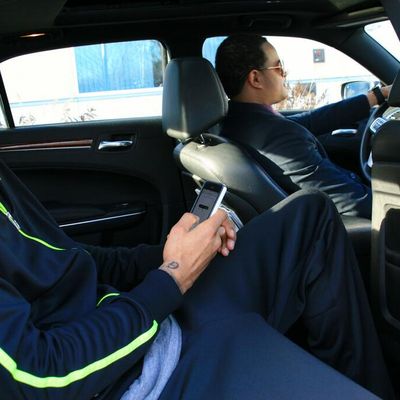
Over the weekend, it snowed in New York, and a lot of New Yorkers tried to take Uber cars home from their night activities. Those New Yorkers got upset when the Uber cars cost seven or eight times as much as normal, because of the company’s dynamic “surge pricing” scheme, whereby it gets more drivers to come out on the road during busy times by making rides much more expensive.
This outcry has happened before, and each time, Uber gets hit with accusations of price gouging and defended by those who see surge pricing as a tool of the free markets — when demand for Uber cars outpaces supply, you can quickly increase supply (and decrease demand) by adding more money to the equation. So should we be mad about it?
It depends. The theory behind surge pricing is economically sound. Taxis aren’t a public utility, and, for decades, people who have managed to hail a taxi on snowy nights have effectively been paying a below-market rate. Uber is simply allowing the invisible hand to nudge the equation back toward equilibrium during periods of high demand. It’s no different, theoretically, than an airline raising prices on weekends, or babysitters charging double for New Year’s Eve. Unlike Orbitz’s plan to push different hotels on customers based on whether they use a PC or a Mac, Uber’s higher prices aren’t discriminatory — they apply to all riders in a given zone, for as long as is needed to get more drivers out on the road. And even an exorbitant price for a few Uber cars is better than having no Uber cars available at all, which would create an effective per-car rate of infinity.
I understand why New Yorkers get upset about surge pricing, though. It feels unfair to pay more for an Uber car when it’s snowing, in the same way it feels unfair when bodegas jack their umbrella prices up the minute it starts to rain. And if you’ve ever tried to hail a cab on a Friday night in Soho, you know there’s an element of pride in being able to hail a stable-priced taxi, even in the most crowded neighborhood.
Matt Yglesias and Timothy B. Lee think that one answer to the surge pricing problem is for Uber to give all the extra money gotten from surge pricing to drivers, keeping cars on the road while reducing the risk of a public backlash by making it clearer that the pricing scheme is meant to benefit drivers, not the company itself.
I think the answer is simpler. As I wrote recently, Uber is in its empire-building phase. It wants to become the Amazon of transportation, roughly speaking. Amazon, of course, is known for its willingness to sell at extremely thin margins, or even negative margins, for years at a time in order to acquire a customer base and make those customers extremely loyal.
If Uber wants to create the same kind of fan base and avoid scaring away new customers with bad-weather sticker shock, it should cap the amount riders pay at two or three times the normal rates, while still paying drivers whatever rates it needs to get them to come out onto the roads. If a surge ride would normally cost $200, with $160 going to the driver, Uber should still pay that driver $160, but keep the costs for riders contained to, say, $80, and eat the other $80.
This would mean that Uber would lose a fair bit of money a few nights a year. But Uber could think of these nights as loss leaders. If fares were capped at something resembling a normal rate, Uber riders would be able to get cars, even on busy nights, and they’d come to trust Uber as a reliable, semi-affordable transportation grid. Then, three or four years from now, when everyone is used to the idea of dynamic pricing, the company could begin letting rates float back up to market prices.
Artificially subsidizing rider costs might not sit well with Uber’s free-markets-loving CEO, but it would prevent the kind of periodic PR blow-ups the company has been facing, while still making sure that riders and drivers are happy. Uber has proven it’s willing to take thin margins on UberX, its low-cost option, which is now cheaper than regular taxi service in many cities. Why not put those Google Ventures millions to good use and start bridging the gap between how much customers are willing to pay, and how much drivers need to make it worth their while?





























